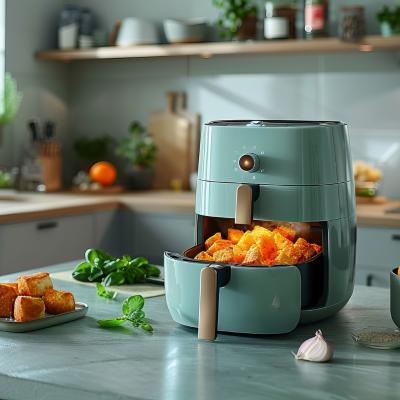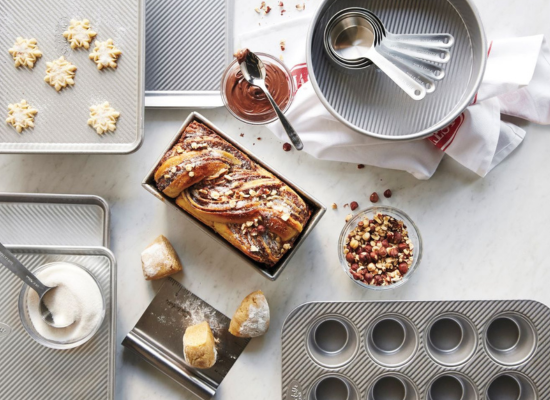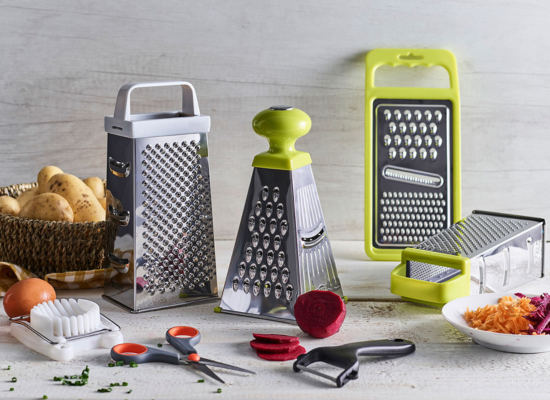
Have you ever attempted a recipe that specified to heat oil to 350°F or 370°F and wondered how you could tell when it was hot enough for frying short of using a thermometer? If yes, then this blog post is for you!
Some people use a wooden spoon to determine the temperature of oil, some use a bread cube or a kernel of popcorn. Whereas, others use flour, a slice of onion to check the temperature of oil without a thermometer.
There are also others who just hold their hands over the pan to feel the right temperature. It’s important to keep track of your cooking oil temperature to ensure that your food is cooked evenly and properly
However, if you don’t have a cooking thermometer on hand, there are still several ways you can check the temperature! Let’s read on to know more about the various ways to check cooking oil temperature without a thermometer.
Checking Oil Temperature Without a Thermometer
Let’s check out the different methods we can use to understand if our cooking oil has reached the ideal temperature without using a thermometer!
1. Using Wooden Spoon or Chopstick
You can use a wooden spoon or chopstick to check whether your cooking oil has reached the desired temperature. To do so, toss in a wooden spoon or chopstick into the cooking pot or pan and observe if bubbles start forming around it. If yes, then you know that the cooking oil is ready for frying!
2. Using Flour Test
Another way to find out if your cooking oil has reached its desired temperature is by using the flour test. Add a pinch of flour into the hot cooking oil and see what happens when you stir it with a fork or toothpick!
If small balls start appearing on top of each other after stirring gently, this means that they’ve been cooked evenly throughout which indicates an appropriate time at which to add your food items.
3. Using Water Droplets Test
Another way for checking oil temperature without thermometer is by using water droplets test. Add a few drops of cold water into the hot cooking oil and if it sizzles and pops, it means that the cooking oil is at its desired frying temperature!
However, make sure you don’t add too much water which can cause it to overflow and spill over the cooking pot or pan.
4. Using Bread Test
The bread test is another great way for checking cooking oil temperature without a thermometer. To do this, simply drop a piece of bread into the hot cooking oil. If it turns golden brown within 50-60 seconds, the oil is between 350° and 365°- this is ideal for most types of frying.
If the cube browns in 40-50 seconds, the oil is 365° to 380°, which is also necessary for some recipes. If it takes around one minute to turn golden brown, then the oil temperature needs to rise more before dropping food into it.
5. Onion Test
If you’re shallow frying, drop in a thin-sliced onion. If it immediately starts to sizzle, the oil is hot enough.Your oil is getting too hot if the onion starts to brown at the edges in the first few seconds.Take it off the stove for some time before you add your food.
6. Popcorn Test
Using popcorn is a great way to test cooking oil temperature. Add one kernel of popcorn to the hot cooking oil and cover the pot or pan with a lid. If it pops, the cooking oil is at the perfect frying temperature!
But this method is not very ideal because kernels do not always pop and they need to be covered to protect from injury of hot popcorn shooting.
7. Observation
After adding oil to the pan, the oil will start to move and flow once it starts to get heated. It will also develop a faint shimmer.
You can hold up your hands at a safe distance to feel the heat of the oil. if it feels warm, the oil has already heated to the right temperature for frying.
LEARN MORE: Can You Cook With Fish Oil?
The Ideal Oil Temperature
The cooking temperature of your cooking oil will depend entirely on the recipe you’re cooking. However, most cooking oils have a smoke point (the temperature at which the oil starts to produce smoke) of between 375°F and 400°F.
Anything higher than this and your cooking oil will start to break down, which might cause it to taste unpleasant or even give you a headache!
Because cooking oil starts to produce smoke at above 375°F, you should never cook with cooking oil that is hotter than this. If your cooking oil does start smoking during cooking, it’s best to throw out the entire batch and begin again!
LEARN MORE: Can You Mix Peanut Oil and Vegetable Oil?
Why Is the Temperature of Oil Important?
Oil temperature is a very important factor in cooking the perfect recipe. If your cooking oil isn’t hot enough, you might end up with unevenly cooked food or even raw food!
On the other hand, a cooking oil that is too hot can cause food to overcook and burn on some parts while remaining undercooked in others. You might also end up with a grease fire if cooking oil gets too hot.
Usually, in oil that is too hot, the food gets burnt on the outside and remains undercooked on the outside.
LEARN MORE: Can You Use Olive Oil for Stir Fry?
Tips to Keep Oil Temperature Stable During Cooking
For keeping the temperature stable add all cooking ingredients at once or in small batches so they don’t cool down too much while cooking! This will not only give your dish more flavor but also prevent it from becoming soggy over time due to less moisture retention.
Cooking with high cooking oil temperatures is ideal for deep frying because it allows food items to be cooked evenly throughout without burning on the outside and under-cooking inside!
When using stainless steel or cast iron pans, a better alternative is to heat the pan first without any oil in it. If the air over the pan feels hot or warm, you can add the oil to it. The temperature of the oil will be maintained at the correct level.
LEARN MORE: Can You Fry Chicken in Extra Virgin Olive Oil?
Conclusion
So, these are some different ways of checking cooking oil temperature without a thermometer. Now that you know different ways of checking cooking oil temperature without a thermometer, it’ll be much easier for you to determine when your food is ready to be fried!
Just remember to keep the cooking oil at a stable frying temperature by adding all ingredients at once or in small batches. Using any of these methods should help you in ensuring that your food is fried at the correct temperature and doesn’t end up becoming either too oily or soggy!



